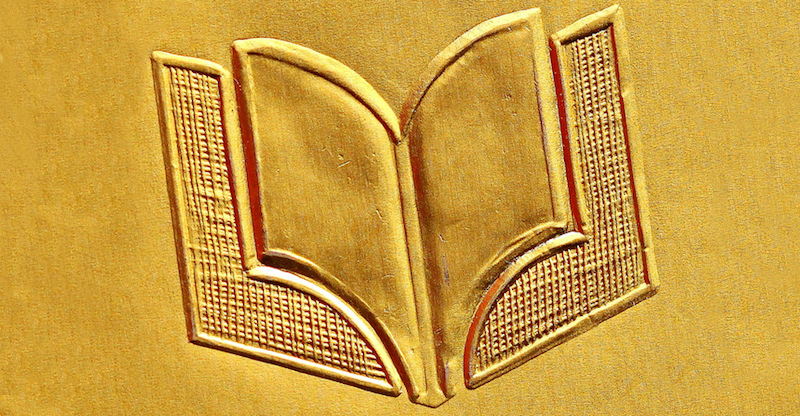
Novels:
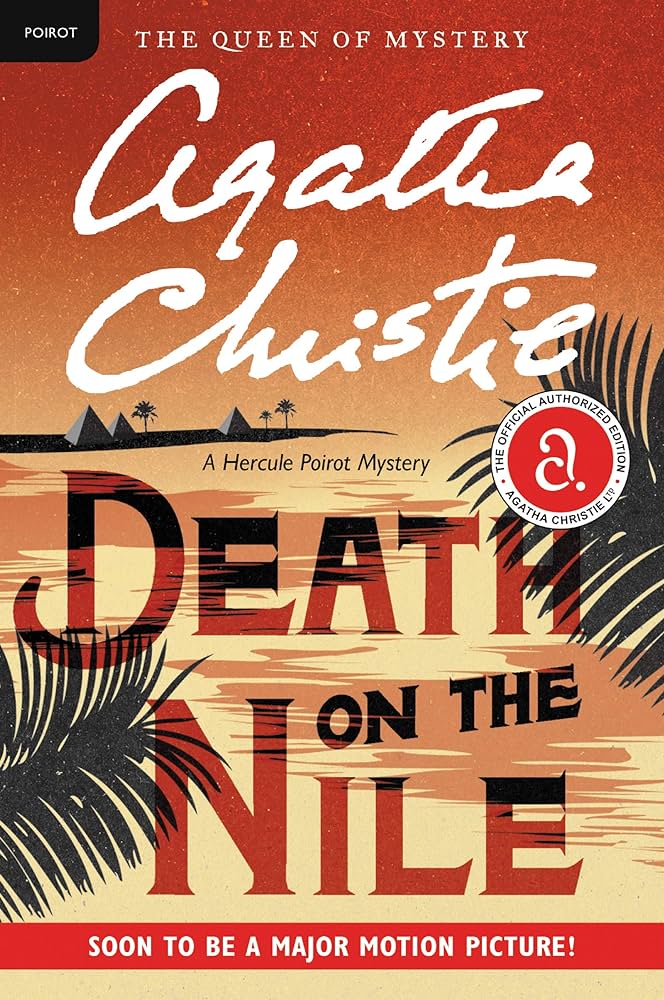
Death on the Nile: This year has been the year of Poirot for me. 2023 saw me read a variety of the Poirot novels, see the new Branagh films, and watch the television series starring David Suchet. Of all the many excellent books I have read in the series thus far, I feel that Death on the Nile is my personal favourite.
Death on the Nile has Poirot travelling on a steam boat down the Nile river along with a number of eccentric and suspicious characters including: Linnet Doyle a newly married heiress, her husband Simon who is described as a simple but handsome man, and Jacqueline de Bellefort, Linnet’s former friend who was previously engaged to Simon, as well as a number of other eccentric and suspicious figures. Things are complicated by Jacqueline who is seeking out revenge on Linnet for stealing her fiance, and has been following her and her husband around the world while carrying two deadly pistols. Things go from bad to worse though when mysterious murders start happening aboard the vessel.
Death on the Nile carries with it all of Christie’s signature story elements. It involves a complicated murder that Poirot must solve, multiple suspicious characters who aren’t what they seem, a classy restrained style, a travelogue featuring historical settings, and even a bit of humour and pathos. Both the mystery and its payoff are cleverly done providing clues to the reader while also not being obvious. Poriot is also in great form uncovering hidden truths and secrets, and piecing them together to give a clear picture of the murder and the various people aboard the ship.
While I would highly recommend reading a lot of Poirot novels, if you only plan on reading one or are just starting then this would be the one I would recommend.
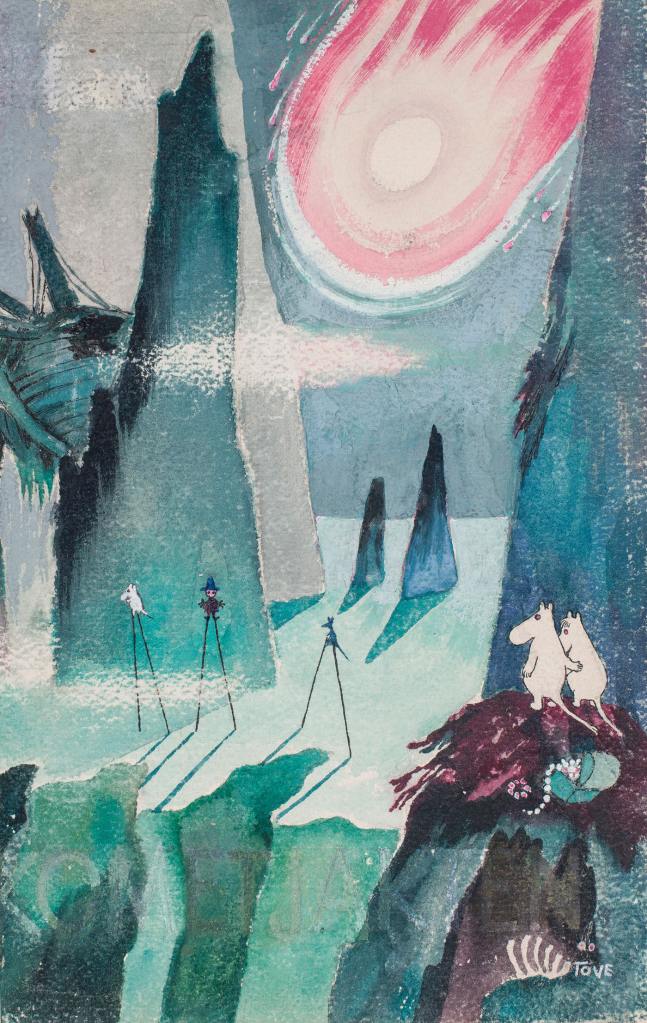
Comet in Moominland: Comet in Moominland is a brilliant children’s book. Filled with whimsy, creative ideas, and a bit of surrealism it is an offbeat story that immediately grabbed my attention as an excellent read.
Comet in Moominland stars Moomin troll and his pal Sniff as they seek to discover the mystery of a comet which is heading towards their home. On their way to learn more about the comet they meet a variety of strange characters including Moomin’s friend the wanderer Snufkin, the Snork Maiden a colour changing creature resembling Moomin, her serious brother the Snork, the Hemulens obsessive creatures more interested in their hobbies than anything else going on around them, and Mr.Muskrat a self proclaimed philosopher.
Reading through this story was a blast, and like any good book each chapter had me wanting to read on and find out what happens next. While the main narrative is never forgotten often the story would go on unexpected odd and enjoyable detours. This was complemented well by the adorably strange and obsessive cast who often would get into trouble or strange situations. Even though the cast is terrified of the comet, many of the characters take time to search for treasure, go to shops to look for curios, go to dances, and enjoy themselves.
Despite being the first and only Moomin book I have read, I can already tell that the world featured in the series is filled with delightful wonder and that I will be revisiting it frequently in 2024.
Best manga of the year:
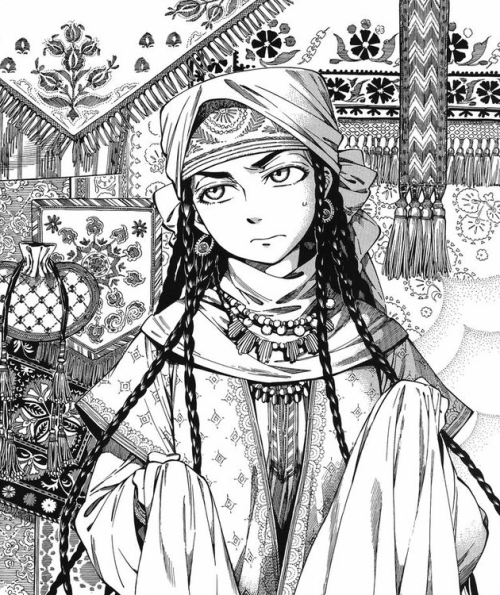
A Bride’s Story: A Bride’s Story is the best manga I had the pleasure of reading this year. As an avid manga reader who has read tons of manga, including many incredible titles I do not make this statement lightly. A Bride’s Tale stands out as one of my all time personal favourite manga series, because each element is so masterfully employed. The plot, characters, and art are all top notch and work together to create an incredible reading experience.
A Bride’s Story takes place in Central Asia during the 19th century and follows Amira, a young bride who comes from a nomadic family in the mountains. It follows her experiences joining a local village and her relationship with her much younger husband Karluk. This series also covers the experiences of those in the town, especially the women and girls living there, and Henry Smith, an English anthropologist studying the community.
A Bride’s Story more than lives up to its interesting premise. Its story moves between themes of drama, romance, comedy, and action with ease. What really stands out though about the story are the characters and the historical designs it uses. A Bride’s Story is effective because it balances Karluk and Amira’s relationship and story with the stories of other character’s. Each character is given their time to shine and is given an interesting and sometimes complex personality. Each character plays a role in the story and community they live in which adds to their intrigue. This depth of character allows them to stand out as unique.
Another major part of this manga is the setting and cultural aspects. Mori makes great pains to ensure that the geography, food, culture, events, and clothing is not only historically accurate with the period, but also a prominent part of the story. Nothing about the setting of this series is incidental. Unlike most manga, the setting is just as important if not more so than any other element.
Mori’s art also stands out as outstanding. Her style is not only reflective of the setting and story, but also stands out in its own right as beautiful and detailed. Aspects missing from other manga series such as backgrounds, perspective, cultural details, anatomy and fashion, and varied panelling are all on full display in A Bride’s Story. Mori also clearly draws from cinematic technique with her use of movement, bringing life to a Bride’s Story and reminded me of the techniques used to convey action by other great manga artists like Tezuka and Urusawa.
I could go on and on praising this series, but ultimately what it comes down to is that A Bride’s Story is a masterpiece. It is well deserving of its many and multi-national awards, and I feel it was the best manga I read this year!

Showa: A History: It is hard for me to emphasise just how monumental this series is. Showa is a masterpiece that covers the personal and the historical, and brings them together in an accessible way to talk frankly about a difficult period of Japanese history.
In these books Mizuki chronicles the history of Japan during World War II while also adding in his own experiences growing up, and being drafted during the war. Why this book works so well is its honesty about the period (something rarely found in Japanese depictions of the war) and its emphasis on contrasts. Mizuki gives an honest depiction of his personal and family experiences growing up during war time, and his personal thoughts on Japan and its involvement in World War II. This is monumental because talking about the war and Japan’s issues during it is still something that is highly discouraged within the country.
Contrast is another impressive element that Mizuki uses both in his art and storytelling. Mizuki switches seamlessly between a realistic artstyle and one more resembling his work in Kitaro. He also includes his character Rat Man as the narrator, despite the narration often having a serious tone. He likes to move from historical events into his own personal story and back and vice versa, blending each in order to create content and a cohesive narrative. Doing this is no easy task, and shows just how versatile and invested Mizuki is.
Showa: A history is one of those special types of series that seem nearly perfect because they are clearly a product of the creators personal passion, interests, and experiences.
Horror manga:
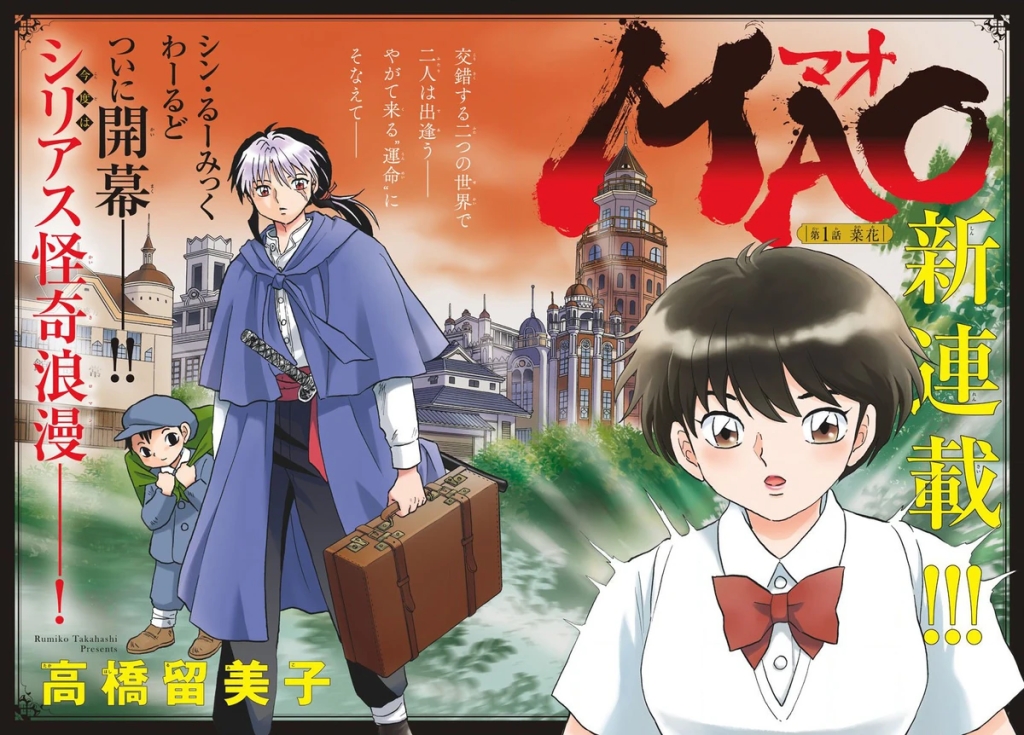
Mao: Mao is an excellent series that doesn’t get the attention it deserves. I find it really strange that it still hasn’t gotten an anime adaptation and has been so overlooked in the Western market, despite its similarities to Takahashi’s other works.
Mao features Nanoka, a middle schooler who finds a gate that takes her back to the 1920’s where she meets the powerful and aloof exorcist Mao, and his assistant Otoya. She soon discovers that her parent’s mysterious death, her recent superhuman abilities, and Mao’s curse are all connected to each other. It turns out that both have been cursed by a powerful cat demon, and they both gradually learn about each other and exorcists from Mao’s past.
One of the reasons why Mao’s lack of popularity puzzles me is the recent influx of translated Takahashi material. While Mao was being published in the United States, the Urusei Yatsura’s manga, the original anime including the movies and the OVA, and the new anime series have all been released, and have been popular and successful. Also Takahashi’s collection of newer short stories Came the Mirror was also released recently and received positive attention.
On top of that, Mao’s tone and plot involving demon slaying is very similar to Inuyasha, one of her most popular series in the United States. Like Inuyasha Mao also combines shonen action with supernatural horror blending the two together. It also contains top notch art which is expressive and reflects the tonal mood, and that highlights the contrast between time periods effectively. You would think all these factors would make this series popular or at least a minor cult hit. For some reason though this hasn’t been the case, and I rarely see Mao mentioned by anyone. This is a shame as I have really enjoyed this series and feel it deserves praise.
If you are a fan of Takahashi’s other works you really owe it to yourself to read this hidden gem of a series.
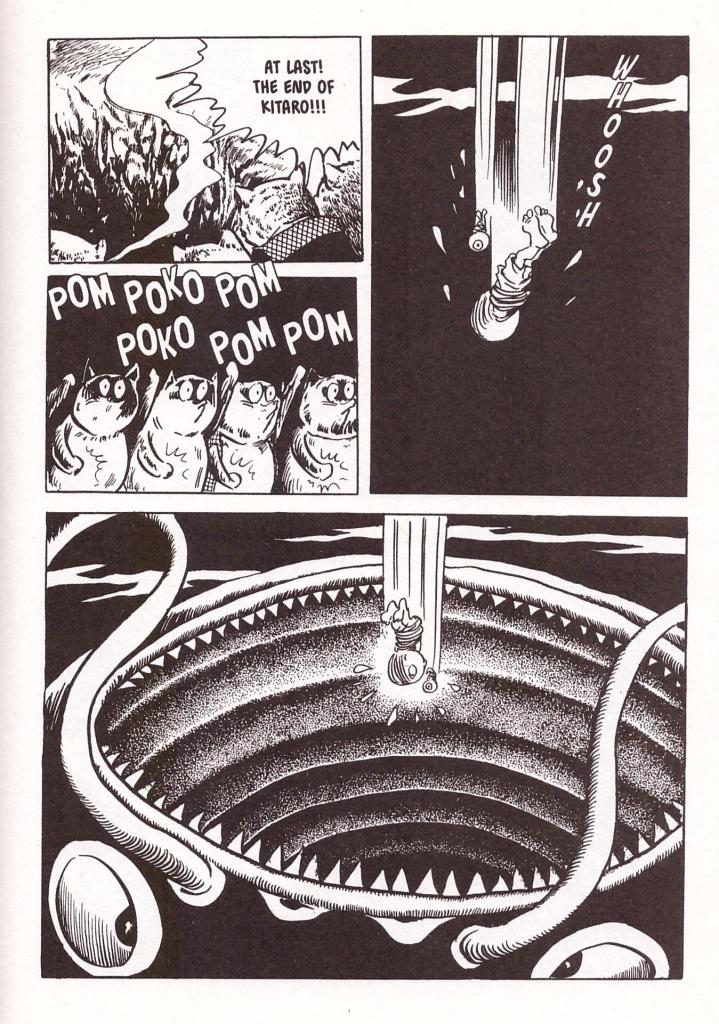
GeGeGe no Kitarō The Great Tanuki War: Shigeru Mizuki is one of those authors like Osamu Tezuka or Rumiko Takahashi that you can count on to always have interesting and weird stories. The Great Tanuki War is probably the weirdest manga I have read this year, but is well worth reading.
The Great Tanuki War finds Japan faced with a crisis as 800 Tanuki (Racoon Dog) warriors emerge angered by the creation of a dam. It turns out though that they also have ulterior motives, and want to claim Japan for their own with the use of a giant moon like egg. This distressing move gets the attention of Kitaro a half yokai (a Japanese supernatural entity) half human boy who is trying to bring peace among the two groups, who decides along with eyeball father and the turncoat coward Ratman to help the humans save Japan, despite the country’s ungrateful prime minister.
The Great Tanuki War is a one of a kind story filled with strange references to Japanese mythology. Its entire premise is based upon the stories of Tanuki who use their bellies as drums and live underground, and the giant spirits they employ to conquer Japan. The artstyle for this story also draws strongly from traditional Japanese Yokai art effectively creating a sense of strangeness to it. What is most strange, however, is the storyline. In it Kitaro uses a number of his strange powers, has his father act as his eye, and is reincarnated after being melted. The story’s conflict between the Tanuki and Japanese people is equally strange and interesting, and contains a lot of political satire regarding the government and its ineffective response. If you like weird stories or stories focused on Japanese mythology then this and other Kitaro stories should be at the top of your reading list!
Shonen:
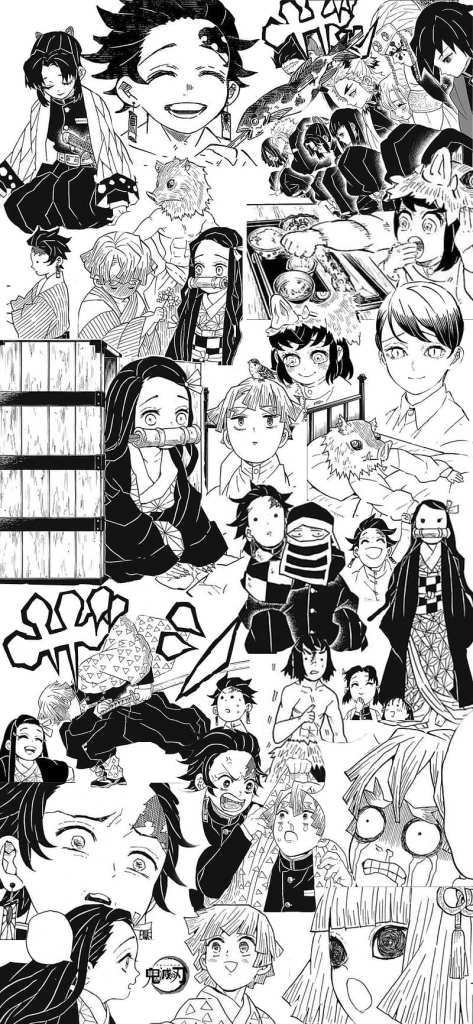
Demon Slayer: As someone who has been reading manga for years it is often hard to impress me. Despite my Oldtaku crankiness I did try to give some of the newer big shonen series a try. While many that I read this year failed to impress me, I did surprisingly really enjoy Justu Kaisen and my pick for this category, Demon Slayer. While Demon Slayer does follow some of the hallmarks of the shonen genre it stands out thanks to its setting and execution, and was an enjoyable read.
Demon Slayer stars Tanjiro Kamado, a boy living in Japan during the Taishō Period (1912-1926). He returns home one day to find his family slaughtered by a powerful demon, and his surviving sister transforms into a demon herself. This experience drives Tanjiro to seek vengeance against the demon responsible, and to become a demon slayer. This series follows his training and quest to help his sister return to being a human, and help others who have suffered at the hands of demons.
Despite having a power system, and journey involving friendship and training Demon Slayer sets itself apart from other Shonen manga thanks to its protagonists and constant sense of danger. Tanjiro is not depicted as the typical plucky and bit naive or dense heroes, but rather as a caring voice of reason for his friends and as someone who cares deeply even for the demons he slays. His strength comes from his personal conviction and determination to help others. His friends likewise are unusual including the cowardly Zenitsu Agatsuma who fights best while asleep or knocked out, and Inosuke Hashibira a wild and brash boy raised by boars. These characters fall outside of the usual Shonen style of character design, as do many of the other Demon Slayers, especially the strong Hashira leaders of the Slayers.
Another aspect that makes Demon Slayer different from most shonen series is the stakes it presents. Characters in Demon Slayer often get hurt or even die including major characters. Despite their powerful breathing techniques and magic swords, slayer’s are often depicted at a disadvantage from the power, immortality, and healing powers that demon’s possess. Slayer’s often rely on demons’ weakness to sunlight or the removal of their heads in order to win battles, often at great cost.
Despite many characters only being given limited story time they make a big impression. Character deaths including the deaths of demons are often depicted as bitter and tragic, and have a major impact on Tanjiro and other characters. This differs strongly from most shonen stories where the heroes winning a battle is almost always seen as triumphant and assured by the end.
The difference this manga has from a typical shonen makes it more appealing and easier for me as a reader to invest in its characters and story. While far from perfect Demon Slayer weaves an interesting tale with unique elements that make it stand out from most shonen manga.
Comedy:
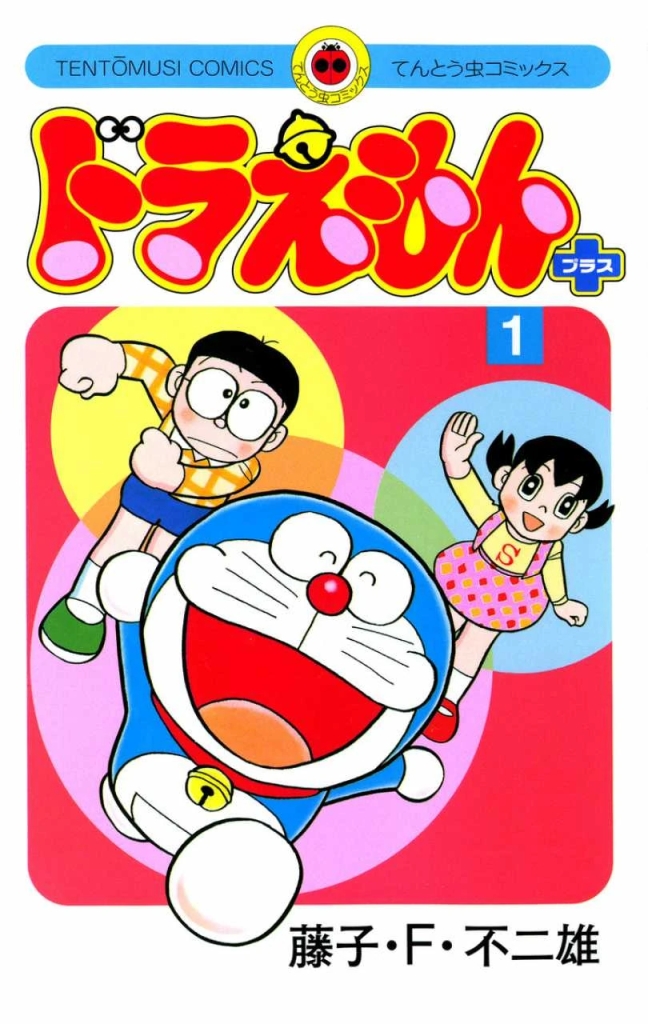
Doraemon: One of the few titles that I have had to read online, Doraemon is strangely absent in the United States. Despite its immense popularity in Japan there has never been a physical English translated manga release in the States. This is a real shame as Doraemon is absolutely worthy of its reputation as a great manga for kids.
Doraemon stars Nobita, a kid who is kind, but also lazy, poor at school, and bad at sports. One day he is approached by his relative from the future who sends him Doraemon, an earless cat robot designed to help Nobita avoid a tragic fate through the use of gadgets brought from the future. In many stories Nobita’s experiences with Doraemon’s devices often backfires as he often becomes arrogant or lazy, or has a friend or family member accidentally stumble upon the device leading to chaos and trouble by the end of each short story.
Despite its age Doraemon is still a delight to read. Fujiko Fujio, the pen name of each of Doraemon’s two creators, brings countless imagination to each vignette along with a small amount of snappy cynicism that feels similar to that found in Peanuts. Each story is fast paced and fun, and often involves weird devices such as time machines, flying propeller hats, and lips that only lie. While the characters are stock they work well together, and it is fun to see how they will react in specific situations. I also like how characters are not always good or bad with the lead sometimes acting poorly, and the series having some stories that make you feel sorry for the antagonists.
I love Doraemon, and really wish that it would be translated into English in a physical form. If it was you can be sure I would be one of the first to pre-order it and suggest friends do the same.
Shojo:
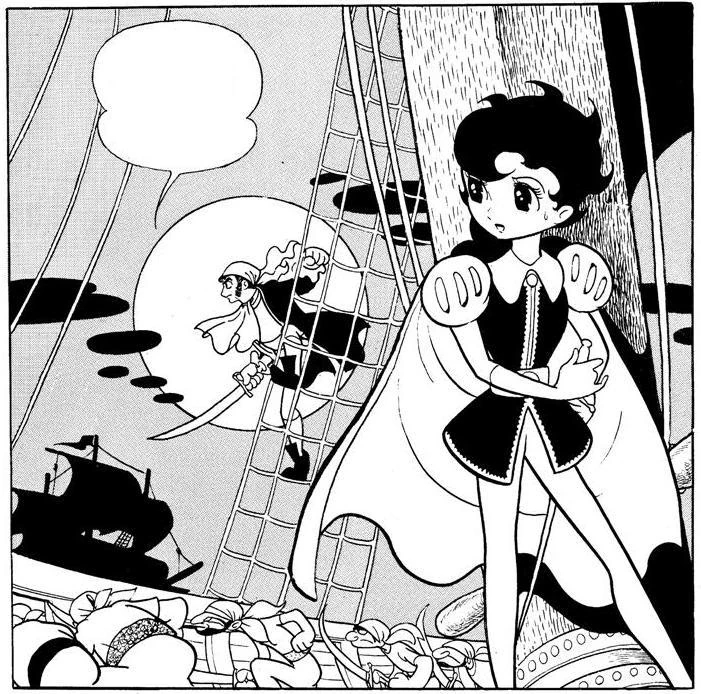
Princess Knight: While I didn’t read a whole lot of Shojo this year (2023), Princess Knight is not only one of the most memorable Shojo manga works I did get to read, but also left a strong impression on me. Osamu Tezuka’s seminal Shojo series, Princess Knight, helped to define the genre and changed it forever.
Princess Knight is a fairy tale featuring Sapphire, a princess who is accidentally given the heart of a brave prince and a beautiful princess at birth by the peppy angel Tink. Opposing her is the wicked Duke Duralumin and his evil henchman Lord Nylon. Duralumin wants to use the kingdom’s misogynistic law to put his own childish son Plastic in charge. On top of that she also has to face a witch and a goddess of love who both want to take away Saphire’s love interest Prince Franz.
Princess Knight is a remarkable story that weaves together themes of action, romance, identity, and feminism together with Tezuka’s own eccentricities to create a truly revolutionary story. Because of Princess Knight many women working in the Shojo genre were able to publish works highlighting their own experiences and feminist themes. Princess Knight stands on its own though as a unique and fantastical story filled with all sorts of fun twists and turns, constantly refusing to sit still and coming up with new surprises. Some highlights of the story for me included the women’s revolt at the castle, an anaemia ridden Sapphire entering into a knight’s contest, and the witch’s daughter Hectate being disinterested in marrying a prince or getting a princess’s heart despite her mother’s objections, and helping Franz to escape. Princess Knight is a really interesting manga that combines all sorts of interesting themes and scenes with Tezuka’s caricaturist art style to create one of the most memorable Shojo experiences.
Drama:
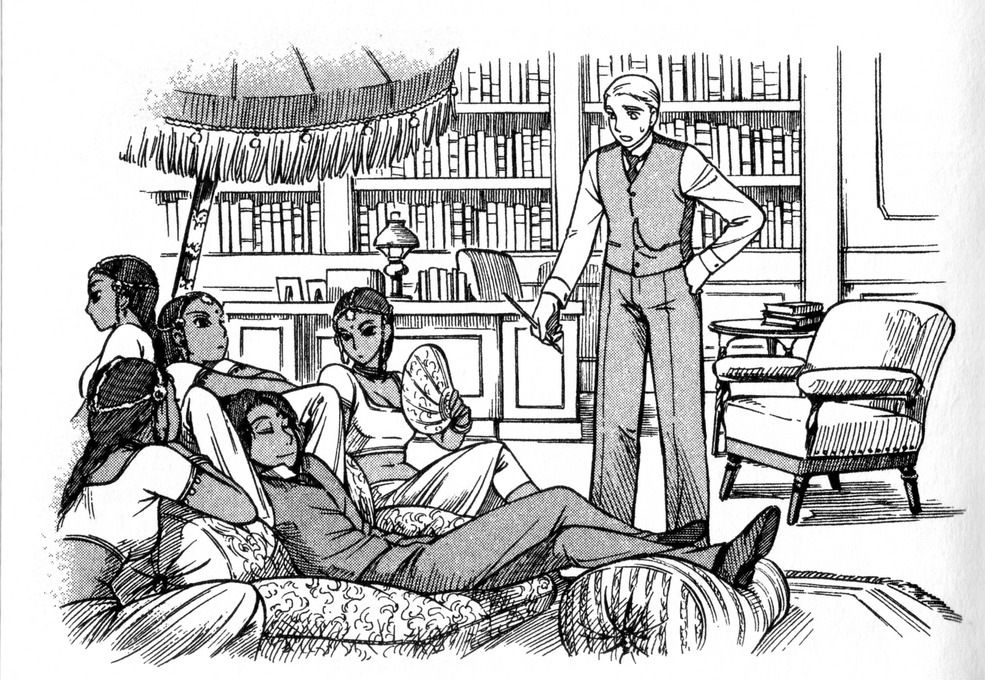
Emma: It was really hard for me to decide if I was going to pick Emma or A Bride’s Tale to be my manga of the year. While I eventually went with A Bride’s Tale due to its interesting setting, Emma is also very much worth reading. It has a lot of the elements you would expect from Mori such as excellent artwork, a focus on maids and historical culture, and engaging characters and story.
Emma focuses on Emma, a Victorian maid, and her relationship with William Jones, a wealthy high end merchant. Despite their class differences the two fall in love, and have to contend with the struggles of the British social class system. They are helped and hindered by a variety of people including William’s best friend and gaudy Indian prince Hakim, Williams disapproving father and approving siblings, and Eleanor Willaim’s an arranged aristocratic finance for William.
Mori’s passion and interests once again shine through in this story. Mori’s love for maids, Victorian fashion, detailed artwork, and romance are all highlighted in this title. Emma clearly also draws inspiration from Victorian class dramas and romance stories, especially those of Jane Austin and the Bronte sisters. Her work also stands alone though as distinctly impressive. Emma is an excellent series and well worth reading, especially if you are a fan of Austen and/or romance stories.
Seinen:
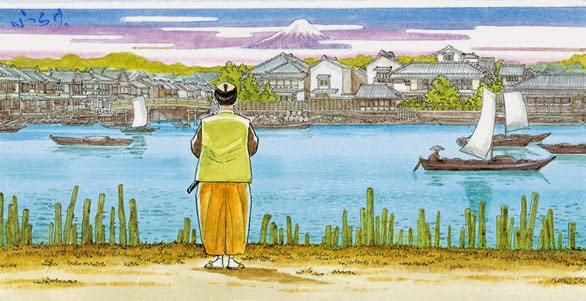
Furari: If you have never read a Jiro Taniguchi manga before, reading this manga will probably surprise you. Whether that surprise would be a good one or not though would largely depend on your interest in slow, relaxing, reflective, and philosophical stories. While most manga do not emphasise these elements, if you enjoy them then this manga will be a treat.
Furari features the story of a man similar to the historical figure Inō Tadataka, a famous middle aged mapmaker who lived in 19th century Edo (Tokyo). Most of the Furari consists of his daily life within the city and his meditations on his work and the world.
Like many of Taniguchi’s works Furari is more about self reflection and character study than it is about a major conflict and issues to resolve. It is also a more abstract work that reflects upon the beauty and structure of the world, rather than having a complex storyline. The book often seems to travel from place to place like its lead, and focuses on his experiences and feelings just as much as what is occurring around him. This type of story-telling suits Taniguchi’s realistic and detailed style, giving it a feel that is rarely explored in other works. While very different from most other manga I am very thankful that I got a chance to read this book this year, and am waiting with baited breath to read Taniguchi’s next translated book (The Solitary Gourmet) in 2024.
Science Fiction:
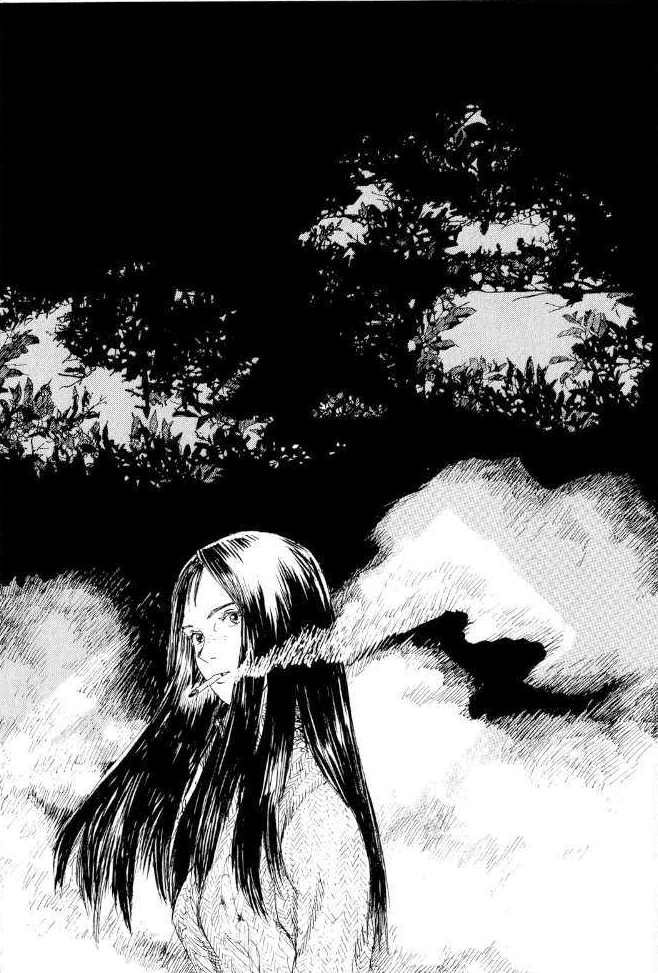
Memories of Emanon: Emenom is not what many people probably think of when they think of Science Fiction. It doesn’t feature space, and isn’t really about the future or scientific discovery. Emanon is instead more of a thought experiment questioning the nature of existence and the world around us.
Emanon follows the experiences of a young looking woman who in reality is a being that has existed and evolved since the earth’s inception, and remembers all of her experiences in detail. Unlike most people she does not ever forget things, and every time she gives birth her memory is transferred into a new body. The series follows her wanderings with stories about her experiences and the experiences of people who have met with her.
Emanon is a fascinating work because it manages to tackle an interesting and complex concept, while also feeling down to earth. Emanon tries to interact like other people, and is cautious about telling her story. She isn’t someone who acts substantially different from the average person, and Emanon’s story is more interested in her feelings and exploration than a grand narrative about her exploits. At the same time though as a reader you do get a real sense of the weight that her memories cause her, and her personal struggles with being unable to forget things and having to carry billions of years worth of memories. This is reflected in her offhand remarks about past experiences, her wandering loneliness, and her refusal to take a proper name (Emanon is no name spelled backwards). These contrasts work well making her seem more realistic, while also reflecting the sort of thought experiments Science Fiction is known for.
The artwork in this series is beautiful to look at, especially the watercolour images. Its style is on the more realistic side, but isn’t so realistic that it feels stiff or out of place. The art does a great job of representing the experiences and memories Emanon has. It also does an excellent job making her look unique, giving her a lanky body and freckles; while also avoiding making her seem over the top. This balance within the art helps to enhance the already unusual story, and makes Memories of Emanon one of the most unusual and interesting Science Fiction comics I have read this year.